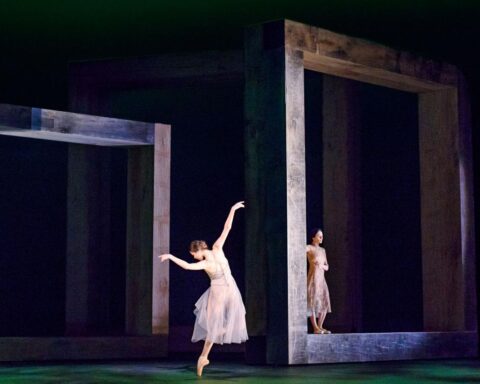Pyotr Ilyich Tchaikovsky’s Swan Lake is one of the most iconic ballets of all time. First performed in 1877, it tells the story of Odette, a princess turned into a swan by an evil sorcerer’s curse, and Prince Siegfried, who falls in love with her. Over the years, Swan Lake has been reimagined in countless ways, with different interpretations of its characters, themes, and endings. Here are three of the most celebrated adaptations that have left a lasting legacy in the ballet world.
1. Marius Petipa and Lev Ivanov’s 1895 Version (Mariinsky Theatre, St. Petersburg)
The 1895 revival of Swan Lake by Marius Petipa and Lev Ivanov for the Mariinsky Theatre is perhaps the most influential version of all time. This production marked the first significant reworking of the ballet after its initial 1877 debut, which had received mixed reviews. The collaboration between Petipa and Ivanov transformed Swan Lake into the timeless classic we know today.
Petipa, a French choreographer and the ballet master of the Mariinsky Theatre, was responsible for the majestic choreography of the Black Swan pas de deux and the court scenes, while Ivanov, his assistant, handled the poetic white acts—the scenes with the swan-maidens, including the iconic Act II, where Odette and her swans appear on the misty lake.
Ivanov’s work on these scenes, with his seamless group formations and fluid arm movements to evoke the swans’ grace, remains one of the most famous aspects of Swan Lake choreography. This version solidified the tradition of Swan Lake being a story of duality: the innocent and pure Odette (the White Swan) and the seductive, manipulative Odile (the Black Swan). The contrast between these two characters continues to challenge ballerinas worldwide, with the role demanding exceptional technical precision and emotional depth.

2. Rudolf Nureyev’s 1984 Version (Paris Opera Ballet)
Rudolf Nureyev, one of the greatest ballet dancers of the 20th century, created a bold reinterpretation of Swan Lake for the Paris Opera Ballet in 1984. Nureyev’s version stands out for its psychological complexity and emphasis on the role of Prince Siegfried. Unlike traditional versions, which focus primarily on Odette/Odile, Nureyev’s adaptation delves into Siegfried’s inner world, presenting him as a melancholic, introspective character caught between the pressures of court life and his yearning for true love.
Nureyev also brought an existential undertone to the story, portraying Siegfried as a tragic hero, unable to escape his own fate. The ballet becomes not just a love story, but a philosophical exploration of desire, illusion, and identity. This version also hints at homoerotic tension between Siegfried and Rothbart, the sorcerer, adding layers of intrigue and nuance.
Nureyev’s interpretation was groundbreaking, shifting the narrative focus and expanding the emotional range of the ballet. His choreography remained faithful to the classic structure, but he added more solo variations for Siegfried, increasing the role’s physical demands. His version has been hailed for its depth, and it has influenced how Swan Lake is staged and interpreted by future generations of dancers and choreographers.

3. Matthew Bourne’s 1995 Version (New Adventures, London)
Perhaps the most radical and groundbreaking adaptation of Swan Lake is Matthew Bourne’s 1995 version. Bourne, known for his daring reinterpretations of classical works, transformed the ballet into a modern, gender-bending masterpiece that continues to captivate audiences. In Bourne’s version, the traditional female corps de ballet of swans is replaced by an all-male ensemble, and Odette is reimagined as a powerful male swan, danced by a male performer.
Bourne’s production is both a tribute to the original and a bold reinvention that subverts traditional gender roles in ballet. His muscular, animalistic swans bring a raw energy to the stage, in stark contrast to the ethereal femininity of the classical versions. The male swan, who takes on the role of Odette, becomes a symbol of untamed power and vulnerability, creating a complex dynamic between him and the Prince.
In addition to the gender swap, Bourne’s Swan Lake also shifts the focus from medieval fantasy to a more contemporary, psychological drama. The Prince’s journey is one of personal discovery, exploring his repressed emotions and societal constraints. Bourne weaves in elements of satire, drama, and even humor, making the production accessible to a wider audience while still retaining the emotional core of the original story.
Matthew Bourne’s Swan Lake was revolutionary in the ballet world, and its bold reinterpretation won critical acclaim, including multiple Olivier Awards and a Tony Award for Best Choreography. It continues to be performed around the world and has inspired numerous productions to break away from the traditional mold of ballet.

An Artistic Journey Through the Ages
Each of these three adaptations of Swan Lake has left an indelible mark on ballet history. From the enduring classicism of Petipa and Ivanov’s 1895 version, which defined the ballet’s tradition, to Nureyev’s psychological depth and Bourne’s modern reimagining, Swan Lake continues to evolve and inspire. These adaptations reflect the timelessness of Tchaikovsky’s score and the ballet’s ability to resonate with audiences across generations and cultures.




